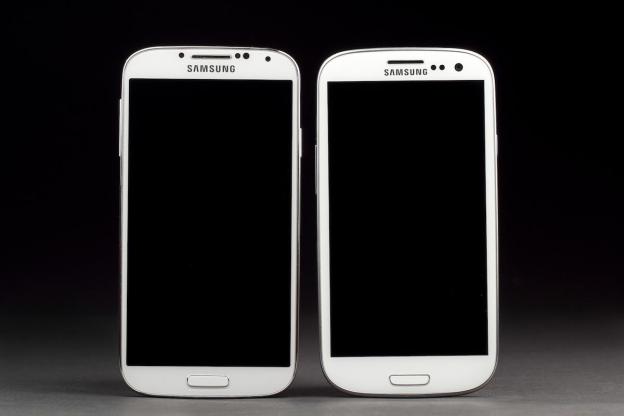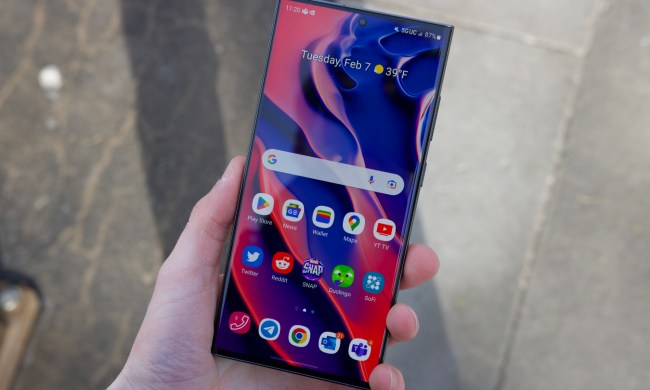
Samsung’s Galaxy S4 is one of our favorite Android smartphones available right now, and if you don’t know why just check out our full review. The GS4 isn’t a major overhaul of the Galaxy S3, though the upgrade is significant. Samsung added a ton of new features, faster hardware, and somehow added a bigger display while retaining the size, basic design, and interface of its predecessor. Given that the S3 is now “last year’s phone” and thus available at a hefty discount from many carriers, it’s even more attractive, especially for customers on a budget. Is the Galaxy S3 still worth a look in a world where the Galaxy S4 exists? Definitely.
Price isn’t the only factor. There are aspects of the design, hardware, battery life, software and features that could make one phone or the other a better choice. Let’s break down the major differences between the Galaxy S4 and the Galaxy S3 to help you make that choice.
(Read our full Galaxy S4 review and Galaxy S3 review.)
Design and Display
Samsung consciously kept the design of the S4 very close to that of the S3. They have the same dimensions, almost the same weight (the S4 0.1 is ounces lighter, though this isn’t apparent if you hold them both), and only a few aesthetic differences to distinguish them. The most noticeable difference when looking at them side-by-side is the larger display on the S4, and that’s only apparently because there’s less bezel than on the S3, particularly at the bottom. That sometimes causes an issue with the S4’s Home button; our thumbs sometimes tap the screen when trying to push it since there’s less bezel.
The difference between a 5.0-inch display and a 4.8-inch one is minimal when it comes to physical dimensions. More significant is resolution – the Galaxy S4 gets full HD 1920 x 1080 pixel resolution while the S3 has a 1280 x 720 HD screen. The benefits of full HD on such a small screen are only felt in specific instances, such as watching movies and playing some games. The S4 has the advantage when displaying very tiny text in e-books or Web pages, but at the default size text crispness looks the same. The S3’s display is brighter at 100 percent by just enough to be noticeable, but the difference isn’t striking. Going by looks alone, the displays aren’t significantly different. Behind the scenes, Samsung upped the display sensitivity for the S4 to add extras like Air View (hovering a finger above the screen to get extra information) and the ability to use the screen with gloves on.
TouchWiz and Android
The Galaxy S4 launched with the latest version of Android Jelly Bean, 4.2; Samsung updated the G3 to Jelly Bean 4.1 recently. The TouchWiz skin covers Android in both instances, and the basic operation and look are similar. Thanks to this extensive UI, all Samsung phones are slow to update to new versions of Android, and owners can’t always count on more than one or two upgrades. If you want the phone most likely to get the next Android version, Key Lime Pie, then the S4 is the more likely of the two.
When the Galaxy S3 first launched, it did so with a slew of software features, apps, and services to support it. This strategy must have worked, because Samsung more than doubled the offerings for the S4. We’ve outlined some of the most useful of the S4’s features here, and many aren’t available on the S3. Admittedly, the S4’s laundry list of extras is overwhelming and a bit messy, and some of that functionality is available via third-party apps in the Google Play store. Some of it isn’t, though, and it’s not likely that Samsung will update the S3 with all of the cool goodies.
Overall, you’ll get a similar experience on both phones, though the Galaxy S4 is capable of more tricks right out of the box. If you value smartphones for their Swiss Army Knife qualities and want one that offers as much functionality as possible, the newer Galaxy is all about that. If your needs are more basic, then you won’t miss out on much by going with the Galaxy S3.
Cameras

If any one feature highlighted the difference between some goodies and ALL THE GOODIES, it’s the cameras on the Galaxy S4 and S3. The S4 doesn’t just have more megapixels — 13 to the S3’s 8-megapixels — it has a more involved camera app and picture quality is markedly better. The S3’s camera app has a good number of options that help it take better photos and some fun sharing features, including the ability to connect to other Galaxy phones for instant sharing in a small group. The Galaxy S4 camera adds to that several photo enhancing and manipulation modes that make for print-worthy shots. Check out our deep dive into the Galaxy S4’s camera for details. Bottom line: if getting the best photos out of your camera phone is a high priority, the S4 is the better choice. If a good camera is nice to have but not as important, you won’t be disappointed in the S3.
Hardware and Performance
Obviously, a newer phone is going to have better hardware and most of the Galaxy S4’s specs are just an upgrade from the previous version. There are a few notable exceptions. The S4 includes several new sensors that make some of the enhanced features possible. One IR blaster for controlling TVs and other media devices, another for sensing hands-free gestures, plus a thermometer and barometer for determining the environmental levels for S Health. As with the software features, these won’t be useful for everyone and S4 owners may end up turning some of them off.
With better specs come better performance. The Galaxy S4’s quad-core processor and 2GB of RAM scored 12,185 on the Quadrant Benchmark, more than twice as high as the dual-core Galaxy S3’s 5,272 score (benchmarked post update). In most cases, that performance won’t be apparent. There aren’t many apps that take advantage of quad-core chips right now with the exception of some games. Sticking with a dual-core phone won’t impact how apps run for at least a year, probably more, especially if you don’t play a lot of high-intensity games. The advantage of quad-core is future-proofing. Though octa-core phones are already coming over the horizon, the impact of that isn’t going to hit before you’re done with a two-year contract. The Galaxy S4 will be able to handle apps and Android updates for a long time to come. However, for those who like a lot of baked-in memory, the Galaxy S4 is only available with 16GB of internal memory (though you can add up to a 64GB microSD card).
Battery Life
The biggest drawback to having a super specced out phone is the impact is has on battery life. The Galaxy S4’s large, high-resolution display, multiple sensors, and quad-core processor mean that all-day battery life is only possible if you employ every juice saving trick you know. The Galaxy S3 doesn’t struggle as much and can more easily last all day, especially if you tweak the settings a bit.
Conclusion
Even though the Galaxy S4 is the newer and overall better phone on paper, the Galaxy S3 isn’t that far behind. It was a great phone when it cost $200 on contract and it’s an even better phone now that it’s $100 less. Many customers don’t need the quad-core performance, a fancy camera, a high-resolution display, or a mountain of new features they may never use. And that better battery life is important to many.
A top of the line phone is important, too, and the Galaxy S4 has the hardware to keep it relevant for the length of a typical carrier contract and probably beyond. The newer Galaxy is definitely worth the asking price.
Based on the price, features, and hardware, which Galaxy S smartphone would you choose and why?
Updated 5-9-2013: We’ve added a complete in-depth comparison between the two phones.
Article originally published 3-14-2013.





